
Sir Herbert Beerbohm Tree was an English actor and theatre manager.

Sands of Iwo Jima is a 1949 war film starring John Wayne that follows a group of United States Marines from training to the Battle of Iwo Jima during World War II. The film, which also features John Agar, Adele Mara and Forrest Tucker, was written by Harry Brown and James Edward Grant, and directed by Allan Dwan. The picture was a Republic Pictures production.

Sir Henry Maximilian Beerbohm was an English essayist, parodist and caricaturist under the signature Max. He first became known in the 1890s as a dandy and a humorist. He was the drama critic for the Saturday Review from 1898 until 1910, when he relocated to Rapallo, Italy. In his later years he was popular for his occasional radio broadcasts. Among his best-known works is his only novel, Zuleika Dobson, published in 1911. His caricatures, drawn usually in pen or pencil with muted watercolour tinting, are in many public collections.

The British Museum Reading Room, situated in the centre of the Great Court of the British Museum, used to be the main reading room of the British Library. In 1997, this function moved to the new British Library building at St Pancras, London, but the Reading Room remains in its original form at the British Museum.

Major Randolph Frederick Edward Spencer Churchill was an English journalist, writer and politician.

The StoryTeller is a live-action/puppet television series that originally aired in 1987 and which was created and produced by Jim Henson.
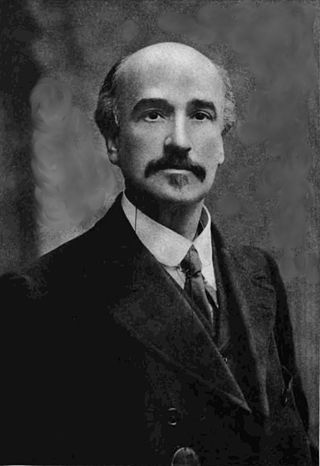
John Davidson was a Scottish poet, playwright and novelist, best known for his ballads. He also did translations from French. In 1909, financial difficulties, as well as physical and mental health problems, led to his suicide.

Sir William Rothenstein was an English painter, printmaker, draughtsman, lecturer, and writer on art. Though he covered many subjects – ranging from landscapes in France to representations of Jewish synagogues in London – he is perhaps best known for his work as a war artist in both world wars, his portraits, and his popular memoirs, written in the 1930s. More than two hundred of Rothenstein's portraits of famous people can be found in the National Portrait Gallery collection. The Tate Gallery also holds a large collection of his paintings, prints and drawings. Rothenstein served as Principal at the Royal College of Art from 1920 to 1935. He was knighted in 1931 for his services to art. In March 2015 'From Bradford to Benares: the Art of Sir William Rothenstein', the first major exhibition of Rothenstein's work for over forty years, opened at Bradford's Cartwright Hall Gallery, touring to the Ben Uri in London later that year.
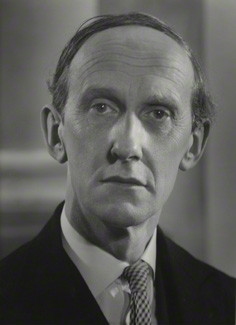
Lord Edward Christian David Gascoyne-Cecil, CH was a British biographer, historian, and scholar. He held the style of "Lord" by courtesy as a younger son of a marquess.

The Eight Doctors is a BBC Books original novel written by Terrance Dicks and based on the long-running British science fiction television series Doctor Who. It was the first of the Eighth Doctor Adventures range and features the Eighth Doctor and introduces his new companion, Sam Jones. The novel takes place immediately after the 1996 television movie.
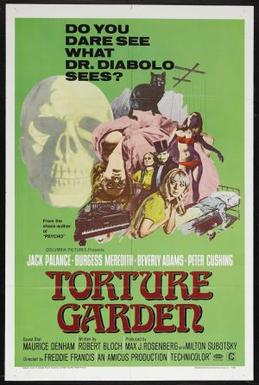
Torture Garden is a 1967 British horror film directed by Freddie Francis and starring Burgess Meredith, Jack Palance, Michael Ripper, Beverly Adams, Peter Cushing, Maurice Denham, Ursula Howells, Michael Bryant and Barbara Ewing. The score was a collaboration between Hammer horror regulars James Bernard and Don Banks.
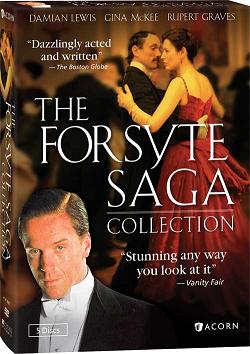
The Forsyte Saga is a British drama television serial that chronicles the lives of three generations of an upper-middle-class family from the 1870s to 1920s. It was based on the books of John Galsworthy's trilogy The Forsyte Saga, which were adapted by Granada Television for the ITV network in 2002 and 2003. Additional funding was provided by American PBS station WGBH, as the 1967 BBC version had been a success on PBS in the early 1970s.
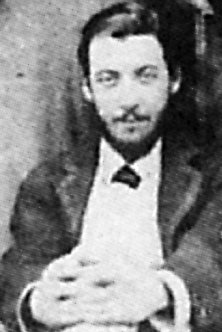
William Charles Kingsbury Wilde was an Irish journalist and poet of the Victorian era. He was the older brother of Oscar Wilde.
The Incomparable Max is a play by Jerome Lawrence and Robert E. Lee. It is based on the stories "Enoch Soames" and "A.V. Laider" in Seven Men by Max Beerbohm.

Rossetti and His Circle is a book of twenty-three caricatures by English caricaturist, essayist and parodist Max Beerbohm. Published in 1922 by William Heinemann, the drawings were Beerbohm's humorous imaginings concerning the life of Dante Gabriel Rossetti and his fellow Pre-Raphaelites, the period, as he put it, "just before oneself." The book is now considered one of Beerbohm's masterpieces.
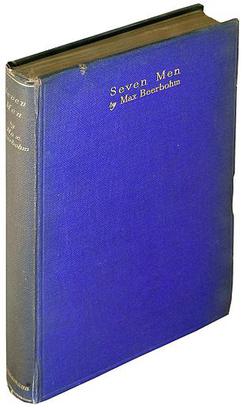
Seven Men is a collection of five short stories written by English caricaturist, essayist and parodist Max Beerbohm. It was published in Britain in 1919 by Heinemann. In the United States there was a 1920 limited edition from Alfred A. Knopf with drawings of the characters by Beerbohm, followed by a popular edition in 1921. An enlarged edition, Seven Men, and Two Others, containing the new story "Felix Argallo and Walter Ledgett" interpolated as the last but one item, was published by Heinemann in 1950.
Constance Mary Beerbohm, was the oldest daughter of Julius Ewald Edward Beerbohm (1811–92), of Dutch, Lithuanian, and German origin, who had come to England in about 1830 and set up as a prosperous corn merchant. He married an Englishwoman, Constantia Draper; and the couple had four children. Constance Beerbohm's brother was the renowned actor-manager Herbert Beerbohm Tree; another brother was the engineer, author and explorer Julius Beerbohm; a younger half-brother was the caricaturist and parodist Max Beerbohm.

The Mind of Mr. Soames is a 1970 British-American sci-fi–drama film directed by Alan Cooke and starring Terence Stamp, Robert Vaughn and Nigel Davenport about a man who awakens from a 30-year coma with an immature brain. The film is based on Charles Eric Maine's 1961 novel of the same name.

Winston Churchill was introduced to painting during a family holiday in June 1915, when his political career was at a low ebb. He continued this hobby into his old age, painting over 500 pictures of subjects such as his goldfish pond at Chartwell and the landscapes and buildings of Marrakesh. He sold some works, but he also gave away many of the works that he self-deprecatingly described as "daubs" as gifts.
The Boy Spies of Philadelphia is a children's novel originally published in 1897 under the title With Washington at Monmouth. It is one of a series of "Boy Spies" novels dating to the 1890s and early 1900s written by James Otis Kaler and William P. Chipman.


















